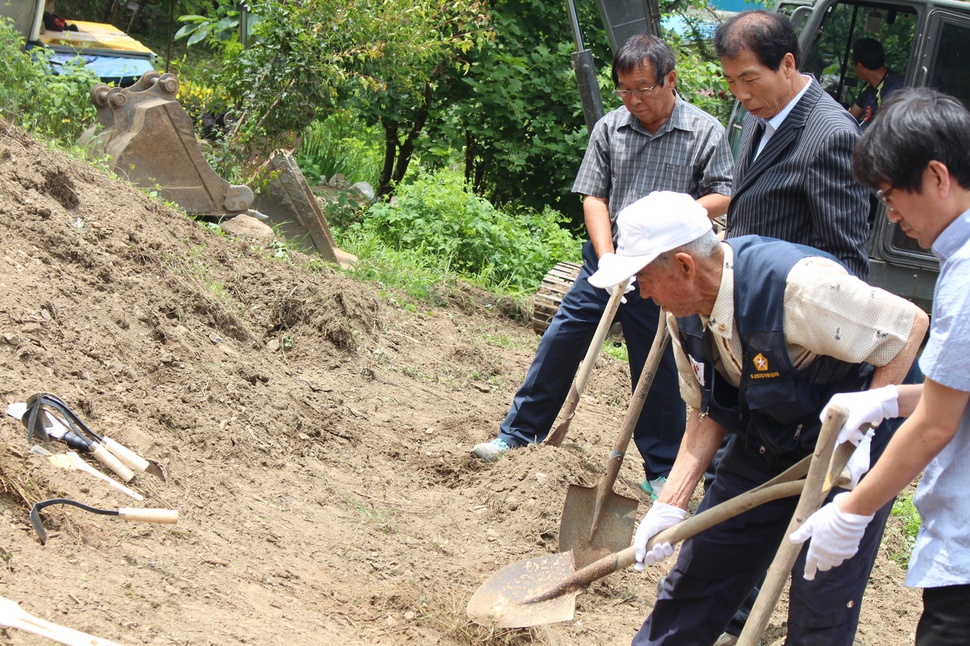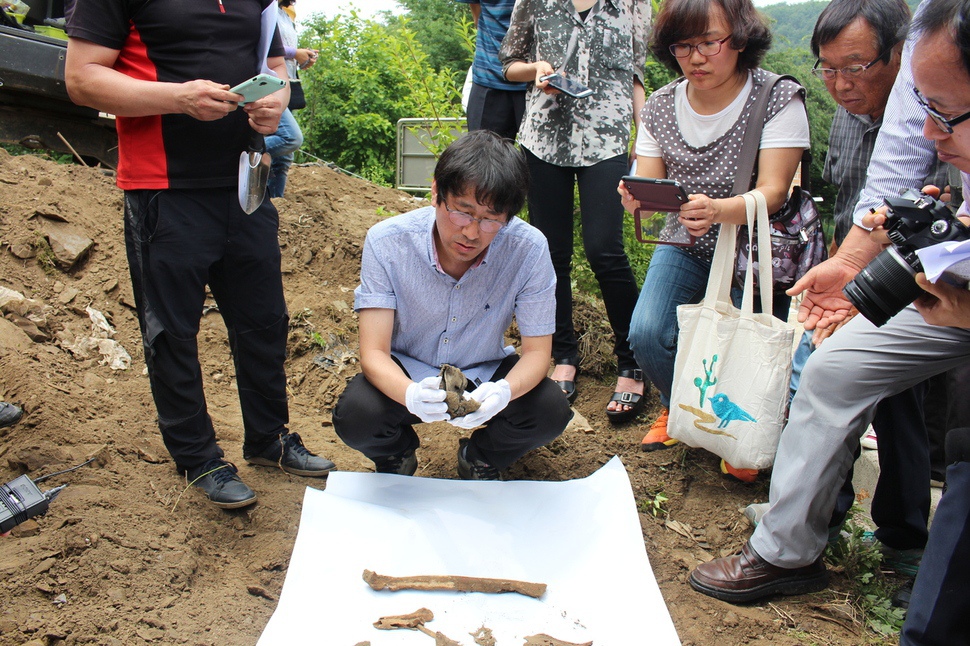 |
|
Park Jung-soon, who was slaughtered during the Bodo League massacre of 1950, during which people suspected of having communist ties were discriminately murdered in Boeun County, North Chungcheong Province. Her son and daughter, pictured here, grew up as orphans, and have since called for the truth regarding their mother’s murder to be officially investigated and recognized. (provided by the North Chungcheong History and Culture Alliance)
|
Project to exhume victim remains to begin on Mar. 8
“Come to the Cheongju Police Station martial arts training center.” On the afternoon of July 11, 1950 – around two weeks after the outbreak of the Korean War – a telephone call was made to Cheongju Central Elementary School. The caller was looking for 28-year-old schoolteacher Park Jeong-soon. Park hurried packed a few belongings and headed to the center. Many people were already there when she arrived. “They said they were going to show us Mt. Songni. [. . .]” Park was skeptical from the beginning, but most of the people were drawn to come to the police station by the offer – around 150 in total. They were members of the Bodo League from the Cheongju area in North Chungcheong Province. Park had gone to work teaching at Cheongju Central Elementary after graduating from Kyungsung Normal School. Her husband had gone missing while engaging in left-wing political activity, leaving behind their two children; Park had joined the Bodo League, a “re-education” program under then president Syngman Rhee for suspected communist sympathizers, in an attempt to shed the “red” label on her family. After spending a night at Miwon Elementary School, she and the others boarded a truck at the directions of the military and police. It headed toward Boeun County, North Chungcheong Province, where Mt. Songni is located – but less than 30 minutes later, the truck came to a halt. The soldiers and police forced the residents out and herded them into the ravine of Achisil in Agok, a village in Boeun’s Naebuk township. They began to fire indiscriminately; gunshots and screams pierced the air. The soldier and police instructed young people from the village to bury the bodies, and the incident came to a close. Until recently, no one had spoken a word of it.
 |
|
Civic groups calling for the investigation of events surrounding the Bodo League massacre in a project to exhume the remains of the slaughter‘s victims in June 2014. (provided by the North Chungcheong History and Culture Alliance)
|
 |
|
An excavator examines what‘s assumed to be the remains of a victim of the Bodo League massacre, an indiscriminate slaughter of civilians suspected of communist ties during the Korean War, in June 2014. (provided by the North Chungcheong History and Culture Alliance)
|







